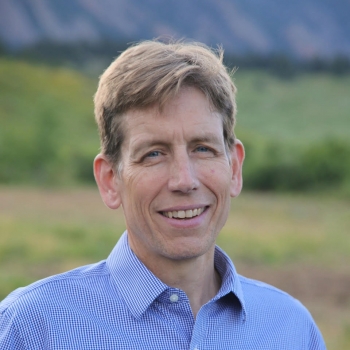
Steven Brown
Program Leader
Tropospheric Chemistry
Atmospheric Remote Sensing
NOAA Chemical Sciences Laboratory
325 Broadway, R/CSL7
Boulder, CO 80305 USA
Affiliation
NOAA
Dr. Brown received a Ph. D. in physical chemistry with Professor Fleming Crim at the University of Wisconsin-Madison. He came to NOAA in 1997 as an NRC post-doctoral fellow working with Dr. A. R. Ravishankara, was a Research Scientist with CIRES at the University of Colorado from 2000 - 2005, and has served as a federal Research Chemist since then. He currently leads the Atmospheric Remote Sensing Program, and the Tropospheric Chemistry Program, a group that conducts field measurements to understand atmospheric composition with applications in air quality and climate. His major research theme at NOAA has been the chemistry and impacts of nitrogen oxides in the Earth's atmosphere, with an emphasis on nighttime chemical cycles. He has also led the development of high sensitivity optical instrumentation for laboratory and field studies of atmospheric trace gases and aerosols.
Education
Ph.D., University of Wisconsin-Madison, 1996
B.A., Dartmouth College, 1989
Research
Atmospheric nitrogen oxides. Nitrogen oxides (NOx = NO + NO2) have both natural and anthropogenic sources, although in the troposphere they are primarily a pollutant derived from fossil fuel combustion. They regulate the abundance of ozone in all regions of the atmosphere and as such are important to air quality, climate and the stratospheric ozone layer. Field and laboratory measurements quantify their ambient concentrations and characterize the processes that govern their atmospheric chemistry.
Nighttime tropospheric chemistry. Atmospheric chemical transformation is driven by sunlight, which acts as a photolytic source of radicals to initiate chemical reactions. In the dark, however, a different set of chemical cycles involving species that are unstable in sunlight can become important. The nocturnal nitrogen oxides, NO3 and N2O5, regulate the nocturnal lifetime of both NOx and ozone, initiate the oxidation of reactive VOC such as biogenic hydrocarbons, release active gas-phase halogen compounds from sea salt, and participate in heterogeneous chemistry and formation of secondary aerosol.
High sensitivity optical instrumentation. Direct absorption spectroscopy is an absolute technique for measurement of atmospheric trace gases and aerosol extinction that has been traditionally limited in atmospheric science applications because of its low sensitivity. Optical cavities greatly enhance the sensitivity and utility of direct absorption methods. Multiple field and laboratory instruments based on cavity ring-down and cavity enhanced absorption spectroscopies are currently in use and / or under development at CSL.
Current Topics
Biomass Burning Emissions, Chemistry and Impacts. Recent field campaigns include the Fire Sciences Lab 2016, FIREX-AQ 2019 and CalFiDE 2022. Recent papers include Rickley (2023), Langford (2023), Washenfelder (2022), Robinson (2021).
Regional Air Quality. Recent field campaigns include SUNVEx 2021, AEROMMA 2023 and CUPiDS 2023. Recent papers include Womack (2023), Wang (2023), Peischl (2023), Langford (2022).
last modified: February 12, 2025
